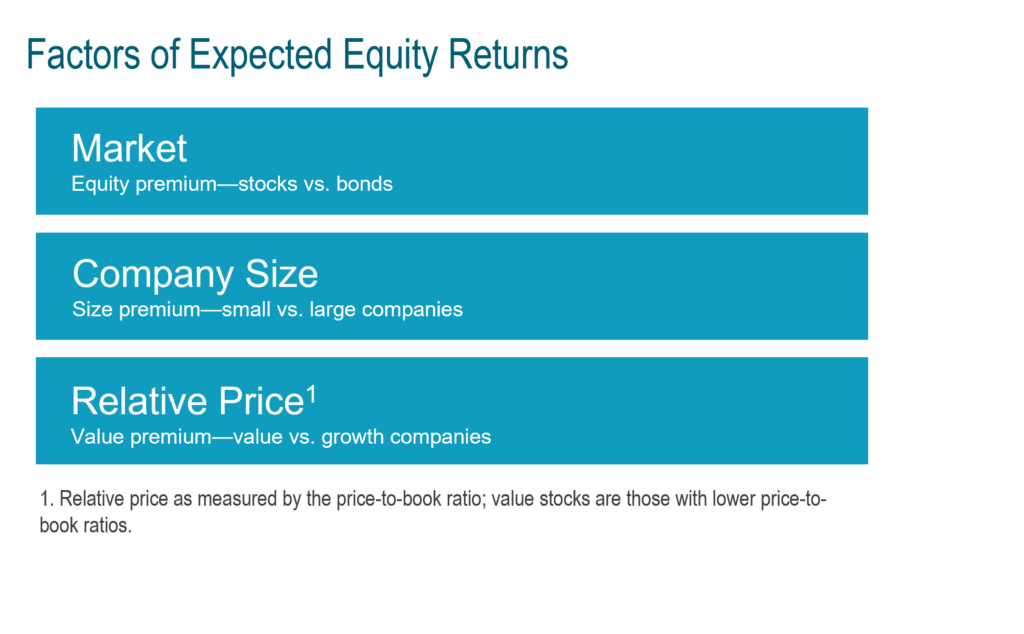Welcome to the ninth installment in our Evidence-Based Investment Insights series: "The Essence of Evidence-Based Investing."
In our last piece, “The Business of Investing,” we explored how markets deliver wealth to those who invest their financial capital in human enterprise. But, as with any risky venture, there are no guarantees that you will earn the returns for which you are hoping, or even recover your investment. This leads us to why we so strongly favor evidence-based investing. Grounding your strategy in rational methodology helps you best determine and stay on a course toward the financial goals you have in mind, especially when your emotional reactions threaten to take over the wheel.
So, what is evidence-based investing?
Alpha, Beta, and Sources of Returns: The Essence of Evidence-Based Investing
Since the 1950’s, scholars have been studying portfolio management to answer key questions such as:
- What drives market returns? Factors are sources or dimensions of market returns. Which factors appear to have persisted over time, around the world, and through various market conditions? Once a potential factor is identified, are there rational reasons for why it is likely to persist moving forward? The more robust a factor appears to be, the more confidently we can tilt a portfolio toward or away from its risks and expected returns, based on personal financial goals.
- What drives portfolio performance (alpha vs. beta)? When comparing the performance of one diversified portfolio to the next, how much of the difference can be explained by different amounts of exposure to these return factors – no matter which individual securities were involved? In financial jargon, that is a portfolio’s beta. How much can be explained by the portfolio manager’s stock-picking or market-timing skills? That is their value-added alpha.
The more we know...
In 1992, Eugene Fama and Kenneth French published their landmark paper, “The Cross-Section of Expected Stock Returns,” in The Journal of Finance. The paper gave birth to the Fama-French Three-Factor Model, which laid the groundwork for most factor-based inquiry that has continued ever since (and earned Fama a Nobel Prize in Economics in 2013).
Building on an earlier financial model, the Three-Factor Model increased financial practitioners’ ability to use market exposures to explain the differences between different portfolios’ returns. We will discuss these and other factors in detail in our next article. For now, the illustration below presents the components of the model and the factors for the broad equity market, the size effect, and the value effect.

To be considered a dimension of expected return, a factor must be sensible, persistent, pervasive, robust and cost-effective.
Over time, the academic community has continued to study new and existing factors, and how they appear to interact and contribute to beta-generating returns. The more we understand about factor investing, the harder it has become to believe that the pursuit of extra, alpha-generated returns can add consistent value – after the costs involved and beyond what already is available through a low-cost, well-structured, evidence-based portfolio.
Or, as Fama has explained more succinctly: “Pick your risk exposure, and then diversify the hell out of it.”
Your Takeaway
As is the case in any healthy scholarly environment, those contributing to the lively inquiry about what drives market returns are rarely of one mind. Still, when backed by solid methodology and credible consensus, an evidence-based approach to investing offers the best opportunity to strengthen your ability to build and preserve long-term personal wealth according to your unique goals.
Next up, we will continue to piece together our exploration of market factors and expected returns.

